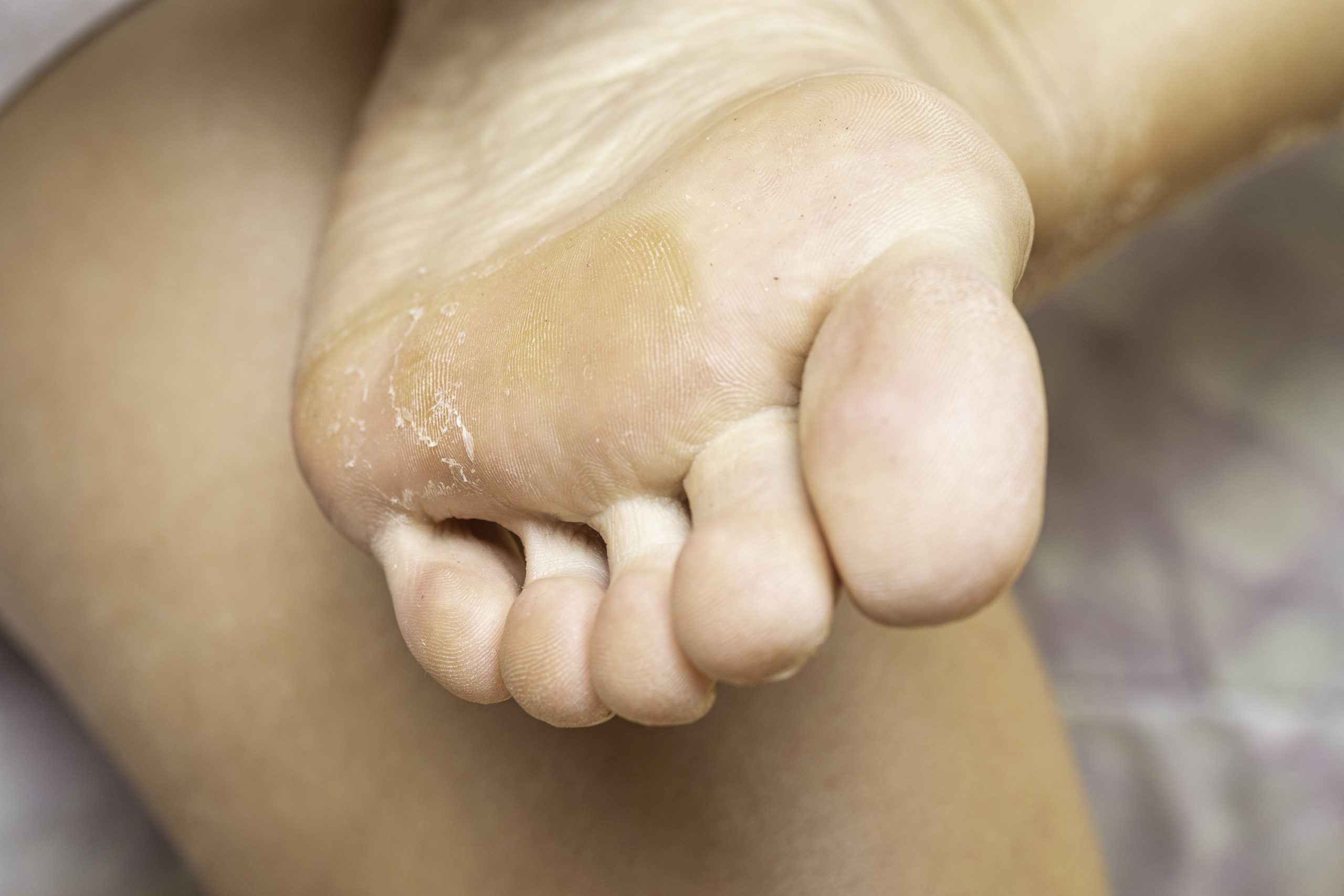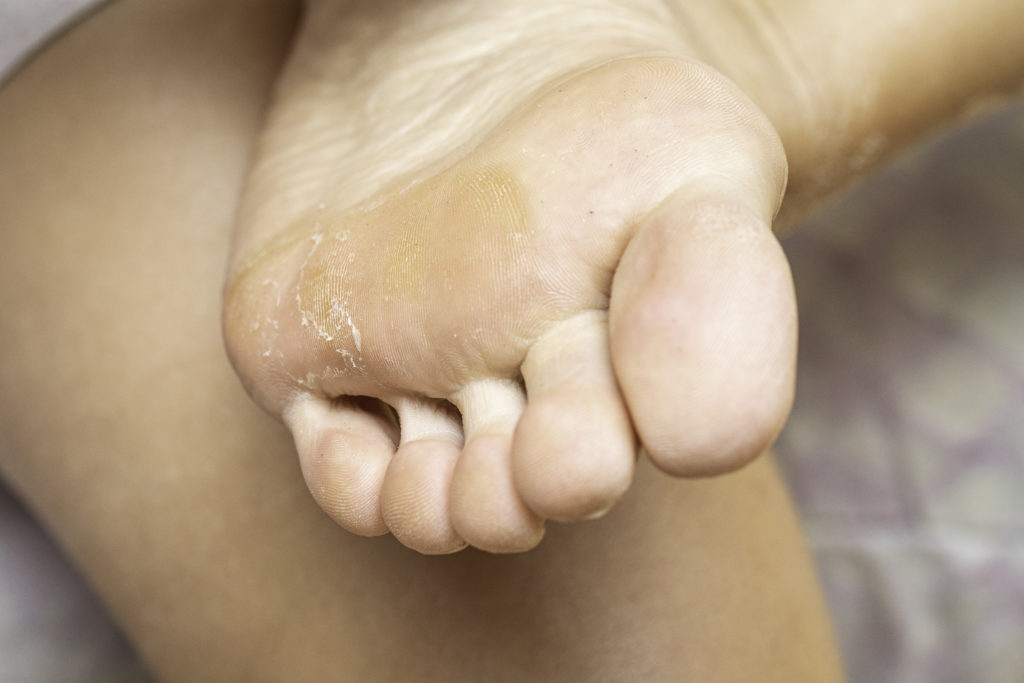
Frustrated by patches of dry, thick skin on your feet? Whether they’re causing you pain, making it difficult for you to wear shoes comfortably, or you simply don’t like the way they look, removing dead skin from the feet can give immense relief while being painless – when done safely and correctly.
Today, the Podiatrists at My FootDr are sharing everything you need to know about dead skin on the feet, including preventing it before it starts, and how to remove it safely.

Why Does Dead Skin Build Up On The Feet?
We call this dead skin callus, and it develops as part of a natural process where your body responds to excess pressure or friction to an area of the foot by adding new skin in these specific spots. This creates a protective barrier which prevents the friction from damaging the skin over your feet, which may otherwise cause a skin tear, leaving you vulnerable to infection, pain and other problems.
If your dead skin appears flakier than thickened, then you may have skin dryness, an Athlete’s foot fungal infection, or other skin condition like psoriasis.
Are Patches Of Dead Skin On The Feet Dangerous?
Having patches of dead skin on the feet is not a reason to sound alarm bells, especially when present in small amounts without discomfort. However, it is important to understand the warning signs and what to look out for, particularly when the callus becomes quite thick. You should consider having the callus safely removed when:
- It starts causing you pain and discomfort when walking
- Wearing shoes is painful and uncomfortable, especially as you may develop other problems like blisters
- You feel like you’re walking on a pebble
- The callus dries and becomes cracked. This often occurs at the heels and if the cracks penetrate deep enough to reach the healthy skin beneath, may cause bleeding and leave you vulnerable to infection
Often, when we remove callus in our clinic, we find that there are also one or multiple corns present beneath the callus that adds to the painful problem. See the difference between corns and calluses here.
Safely Removing Dead Skin From The Feet
When callus is removed correctly, it is not painful, as it is dead skin with no nerve endings or blood supply. Unfortunately, we see many people after they have attempted to reduce their calluses at home but have created a set of new problems as a result. Some remove too much callus, painfully cutting into the healthy skin beneath. Remember – the callus developed as a natural body response to unnatural or excessive pressure or friction, so it’s important to leave a layer intact to continue to protect the foot, and never remove too much so that you cause skin damage.
Others use pharmacy medications, often acid-based, to ‘eat away’ at the callus. Unfortunately, these often come in size-specific coverings, and will get to work on whichever area of the skin they come into contact with – whether it is callused or not. This means the acid can move onto the healthy skin and cause significant pain and damage.
The safest way we recommend to remove the dead skin is to have it professionally removed by your podiatrist. This is particularly important if your feet are already at risk from conditions like diabetes, problems with blood flow or healing, and the like. Here at My FootDr, we carefully debride the right amount of callus to give you relief and comfort while keeping your feet protected and minimising your risk of infection. If any corns are present beneath the callus or on other areas of your feet, we’ll remove these too.
Prevention Is Better Than The Cure
While callus is easily treated by our experienced podiatrists, its development can also be prevented or slowed. Our top tips are for prevention are:
- Avoid tight, hard and uncomfortable shoes that rub against the feet
- Reduce areas of high pressure using custom foot orthotics
- Keep your feet moisturised and prevent them from becoming dry
If you do have callused dead skin and want it gone in one appointment, we’re here to help. We’re proud to be your trusted local podiatry providers, committed to delivering exceptional service, every time.
Book your appointment with us online here or call us on 1800 FOOT DR.


